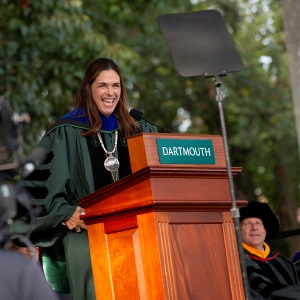Getting some space: UNH-built instrument to observe galactic matter is readying for launch

IMAP-Lo is integrated into a spacecraft carrying nine other instruments. (University of New Hampshire photograph) University of New Hampshire photograph
| Published: 02-06-2025 8:30 AM |
An instrument created by a team at the University of New Hampshire was recently installed onto a spacecraft that is preparing for launch. Known as IMAP-Lo, the instrument could help us learn more about what’s beyond the boundaries of our solar system.
The spacecraft, known as IMAP, is part of the fifth mission in NASA’s Solar Terrestrial Probes program. Part of its purpose is to gather information about what makes up the gas and dust between star systems — what’s known as the “interstellar medium.”
Ten instruments will work together while the craft is orbiting the sun, observing and collecting components of the heliosphere — a bubble that extends from the sun and protects our solar system from harsh conditions in the space beyond it.
IMAP-Lo was built to collect and analyze invisible particles — neutral atoms — that make up the interstellar medium. Those are special because unlike charged particles, they don’t get pulled into magnetic fields, so they can meander through our solar system, and we can measure them on their own.
Nathan Schwadron, a University of New Hampshire physics professor who led the team that created the instrument, says the instrument is looking to fill a hole in scientific knowledge.
“We are interested scientifically in understanding our origin in the cosmos. And in order to do that, we need to actually detect the material that is outside of our solar system,” he said.
Schwadron says humans know a lot about the material on our planet; we’re learning about material on other planets; and we’ve taken lots of measurements of light from far-away stars. But we don’t know very much about the space just outside the boundaries of our own solar system.
“By detecting the region outside of our solar system, by detecting actual galactic matter, we can start to unravel a whole myriad of questions about our origins within the universe,” he said.
Article continues after...
Yesterday's Most Read Articles
 ‘A bit Kafkaesque’: Federal judge spars with government lawyer over status of Dartmouth international student
‘A bit Kafkaesque’: Federal judge spars with government lawyer over status of Dartmouth international student
 Woodstock demotes police chief to patrol officer
Woodstock demotes police chief to patrol officer
 Proposed dog ordinance sparks controversy in Norwich
Proposed dog ordinance sparks controversy in Norwich
 Hundreds of alumni sign letter urging Beilock, Dartmouth to make a stand for academic freedom
Hundreds of alumni sign letter urging Beilock, Dartmouth to make a stand for academic freedom
 Kenyon: A year later, effects of mass arrests at Dartmouth linger
Kenyon: A year later, effects of mass arrests at Dartmouth linger
Learning more about that region can also shine light on how our solar system interacts with what’s beyond it to form the boundaries of our cosmic neighborhood, he said. Those boundaries protect the planets orbiting our sun from a hash radiation environment outside of the solar system.
Measuring galactic material will help scientists understand more about the age of the universe and the evolution of the galaxy. It could also help reveal where, exactly, we are in the universe.
“It turns out that there's a bunch of different ideas as to where that could be,” Schwadron said.
For many years, scientists believed we were located in something called the Local Interstellar Cloud. But now, it seems like we may be in a place where multiple interstellar clouds are interacting — and that could mean the future holds large variations in the boundaries of our solar system.
“We're really at the very, very tip of the iceberg of discovering what the conditions are within the portion of the universe that our sun and our solar system move through,” Schwadron said. “To me, it’s one of the most profound questions that we face, scientifically.”
These articles are being shared by partners in The Granite State News Collaborative. For more information visit collaborativenh.org.






 Amphibians’ migration routines are getting more difficult. These brigades are trying to help.
Amphibians’ migration routines are getting more difficult. These brigades are trying to help. Art Notes: Two Upper Valley events to feature video game soundtracks
Art Notes: Two Upper Valley events to feature video game soundtracks Sandra Oh to speak at Dartmouth graduation
Sandra Oh to speak at Dartmouth graduation Roman Catholics mourn Pope Francis
Roman Catholics mourn Pope Francis
